💸 Budget-Friendly Healthy Ingredient Swaps
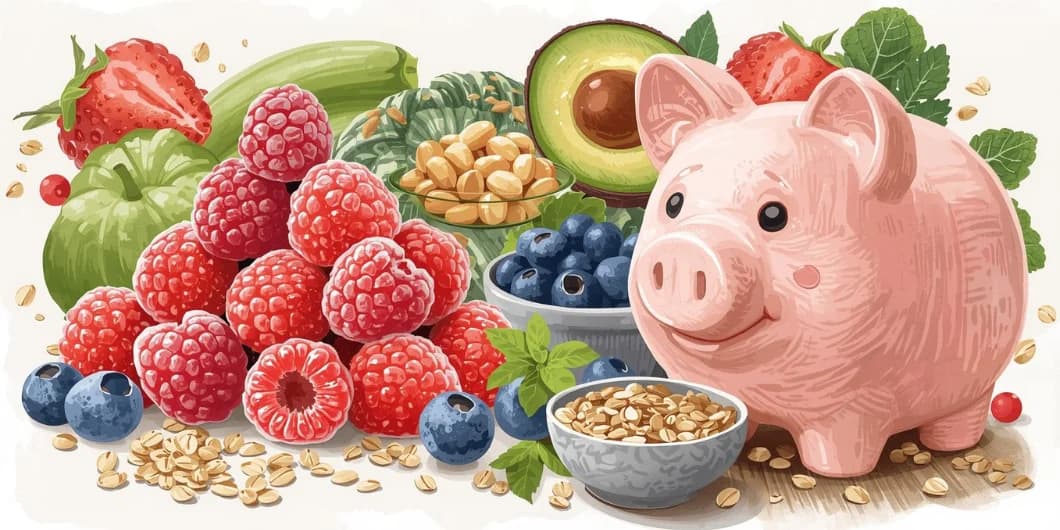
Does your grocery bill make you wince every time you check out? It's a common myth that eating healthy requires a huge budget, especially when you see $12 "superfood" smoothies and $10 jars of almond butter.
But the truth is, a strategic healthy diet can, and should, save you money.
This guide isn't just about saving a few cents; it's about changing your entire strategy. We'll show you how to slash your food budget while eating cleaner, fresher, and more nutritious food than ever. It's about swapping premium-priced processed "health" foods for inexpensive, nutrient-dense whole foods.
🤔 Why Budget Matters in Healthy Eating
Many people abandon their health goals because they believe "healthy" equals "expensive." But that's only true if you're buying pre-packaged "convenience" health foods.
A whole-food approach saves you money by:
- Reducing food waste: Whole vegetables (like cabbage or carrots) last for weeks, unlike a bag of pre-cut salad mix that wilts in days.
- Buying in bulk: Dried beans, lentils, oats, and brown rice cost pennies per serving when bought in bulk.
- Cooking from scratch: You're ditching the 200-300% markup on pre-packaged, pre-cut, and pre-cooked items.
- Eating seasonally: When produce is in-season, it's abundant, fresh, and—most importantly—cheap.
🏆 Top 10 Money-Saving Healthy Swaps
Here are the 10 most impactful swaps you can make to save money and boost nutrition today.
1. Fresh Berries → Frozen Berries 🍓
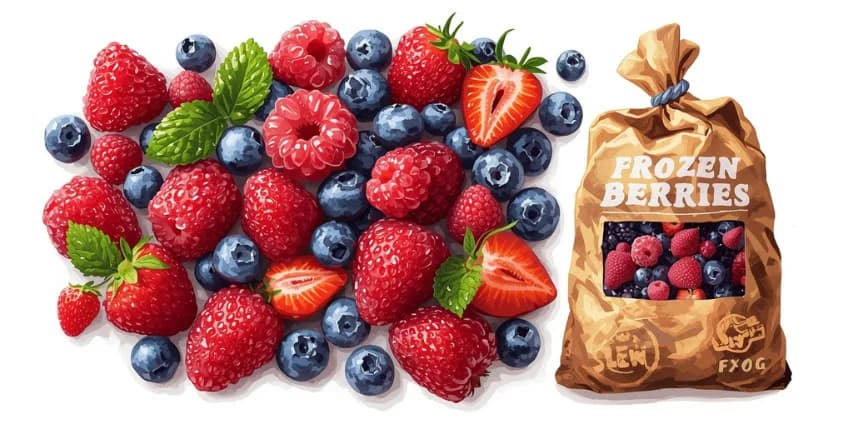
- Savings: 40-60% cheaper, especially for out-of-season berries.
- Nutrition: They are frozen at peak ripeness, often containing more nutrients than the "fresh" ones that sat on a truck for a week.
- Uses: Perfect for smoothies, stirring into oatmeal, or baking muffins (add them frozen!).
- Tip: Always buy the store brand. A $10 bag of frozen mixed berries can last you for weeks.
2. Quinoa → Brown Rice or Oats 🌾

- Savings: $4/lb vs. $1.50/lb. Quinoa is a premium grain.
- Nutrition: Brown rice and oats are still 100% whole grains, packed with fiber and nutrients.
- Uses: Rice for bowls, sides, and stir-fries. Oats for breakfast, homemade oat flour, or energy balls.
- Tip: Quinoa is a "complete protein," but so are rice and beans combined. Don't overpay for a single ingredient.
3. Almond Butter → Natural Peanut Butter 🥜

- Savings: Often 50-70% cheaper ($10/jar vs. $4/jar).
- Nutrition: Nearly identical protein and healthy fat profiles.
- Uses: Sandwiches, smoothies, snacks, homemade sauces.
- Tip: Read the label! A truly healthy peanut butter should have one or two ingredients: "Peanuts" and maybe "Salt." Avoid added sugars and hydrogenated oils.
4. Pre-Cut Vegetables → Whole Vegetables 🥦

- Savings: This is the biggest "convenience tax" in the store. Pre-cut veggies can have a 200-300% markup.
- Nutrition: Identical, but whole vegetables are fresher and last weeks longer.
- Tip: Spend 30 minutes on Sunday chopping your own onions, carrots, and broccoli. Store them in airtight containers for the week. You just paid yourself for 30 minutes of easy work.
5. Bottled Smoothies → Homemade Smoothies 🍌
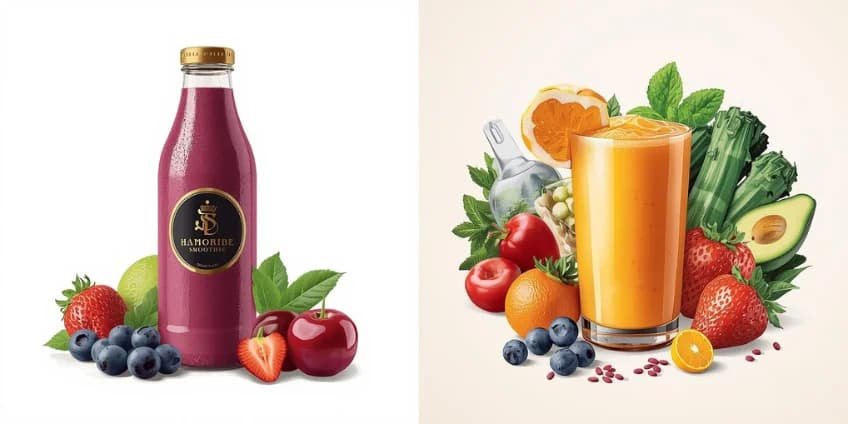
- Savings: $4.50 per bottle vs. $0.75 per homemade smoothie.
- Nutrition: You control the ingredients, meaning no hidden sugars, preservatives, or "fruit juice concentrate."
- Recipe: 1 banana (sweetness) + 1 cup frozen fruit + 1 handful spinach + 1 scoop oats + water.
- Tip: Batch prep! Make 5 "smoothie packs" in freezer bags (banana, spinach, berries) for a 30-second-prep breakfast.
6. Fancy Lettuce Mixes → Cabbage or Romaine 🥬
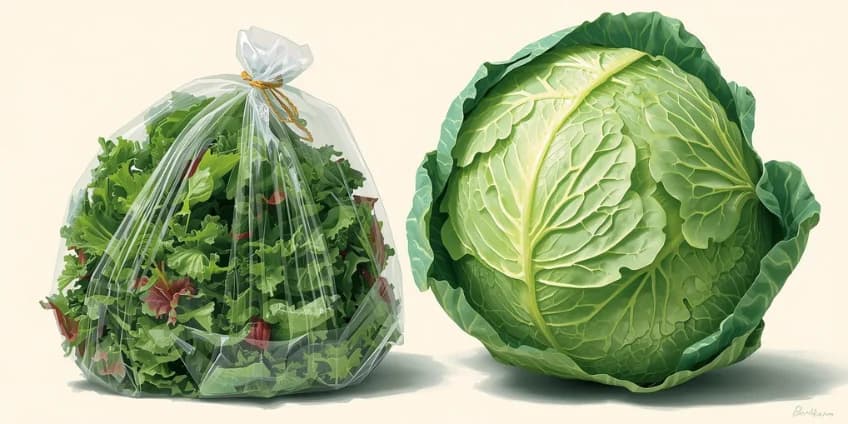
- Savings: A $5 bag of "spring mix" lasts 3 days. A $1.50 head of cabbage lasts 3 weeks.
- Nutrition: Cabbage is a cruciferous powerhouse, rich in vitamins C and K.
- Uses: Salads, crunchy slaws (that last for days), stir-fries, and wraps.
- Tip: Shred a quarter of the cabbage head for a big salad base that stays crunchy all week.
7. Fresh Herbs → Dried Herbs 🌿

- Savings: A $2.99 bunch of fresh parsley is often wasted. A $2.99 bottle of dried oregano lasts for months.
- Nutrition: The flavor is more concentrated.
- Ratio: 1 tbsp fresh = 1 tsp dried.
- Tip: Grow a small basil or mint plant on your windowsill. It's the swap that makes you money.
8. Protein Powder → Greek Yogurt or Cottage Cheese 🥣
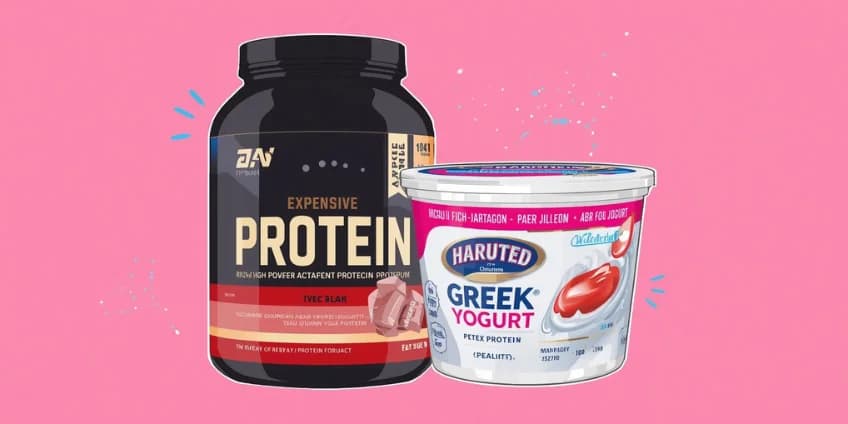
- Savings: A $30 tub vs. $5 for a large tub of yogurt.
- Nutrition: You get whole-food protein, plus calcium and probiotics, with no processed ingredients.
- Uses: A 1-cup serving of Greek yogurt has ~20g of protein. Perfect for post-workout, breakfast, or smoothies.
- Tip: Add a mashed banana or a few frozen berries for natural sweetness.
9. Coconut/Almond Flour → DIY Oat Flour
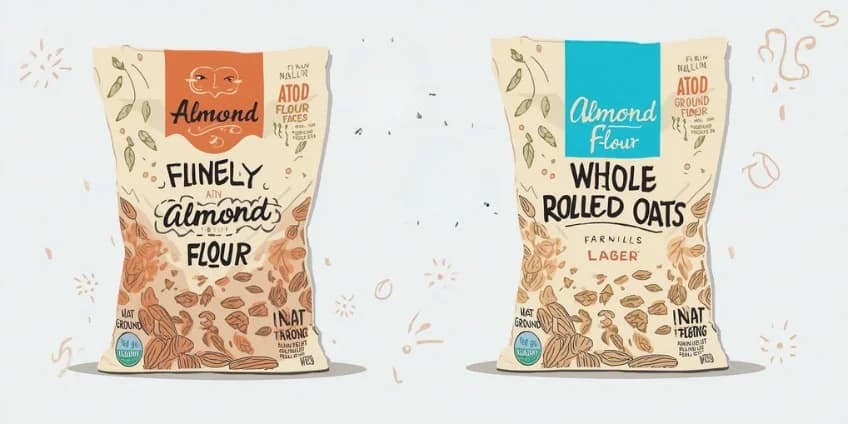
- Savings: Specialty flours are 3-4x the price of rolled oats.
- Nutrition: Whole-grain, high-fiber, and incredibly versatile.
- How: Just blend regular rolled oats in any blender or food processor until it becomes a fine powder. That's it.
- Tip: Store in an airtight container. It's a 1-to-1 swap for all-purpose flour in many recipes like pancakes, muffins, and cookies.
10. Name Brand → Store Brand (Generic) 🛒

- Savings: 30-50% cheaper, instantly.
- Nutrition: Identical. Check the ingredient label—it's often the exact same product from the exact same factory (this is called "co-packing").
- Items: Canned beans, canned tomatoes, frozen veggies, oats, brown rice, peanut butter, olive oil, spices.
- Tip: Pay for the product, not the pretty marketing label.
📈 Budget Shopping Strategies That Work
Strategy 1: Shop the Perimeter of the Store
The outer aisles are where the whole, unprocessed foods live: fresh produce, meat, dairy, and eggs. The expensive, processed packaged goods are in the center aisles. Stick to the perimeter for 80% of your shopping.
Strategy 2: Always Buy Generic/Store Brands
For pantry staples like canned goods, grains, frozen produce, and spices, the store brand is almost always the best deal. The quality is (by law) comparable, but you're not paying for a national advertising campaign.
Strategy 3: Use Coupons & Cash-Back Apps
- Cash Back Apps (like Ibotta): Scan your receipt after shopping to get cash back on items you were already buying (like milk, eggs, or produce).
- Store Apps: Your local grocery store's app (like Kroger or Safeway) has digital coupons you can "clip" with one tap.
Strategy 4: Never Shop Without a Plan (and a Snack)
Meal planning is your #1 money-saving tool.
- It forces you to "shop your pantry" first and only buy what you need.
- It reduces impulse buys (you know exactly what you're there for).
- It drastically cuts down on food waste.
- Pro-Tip: Never shop hungry. You'll buy everything.
🍽️ Sample Weekly Budget Meal Plan (~$40 for 1 person)
This is what it looks like when you put it all together.
Breakfast (7 days): $0.75/day
- Hearty Oatmeal: Rolled oats (bought in bulk) + 1/2 mashed banana (natural sweetener) + 1 tbsp peanut butter (healthy fat & protein).
Lunch (7 days): $1.50/day
- Power Lunch Bowl: Pre-cooked brown rice (bulk) + 1/2 can black beans (rinsed) + 1 cup frozen veggies (microwaved). Add hot sauce or a DIY dressing.
Dinner (7 days): $2.50/day
- Sheet Pan Dinner: Chicken thighs (cheaper & tastier than breast) + 1/2 roasted sweet potato + 2 cups shredded cabbage (roasted or as a fresh slaw).
Snacks: ~$1.00/day
- Apples, carrot sticks, homemade popcorn (kernels are
dirt cheap).
Total: ~$35/week (with a $5 buffer for spices, oil, etc.)
📊 Cost Comparison: "Healthy" vs. Frugal & Healthy
| Expensive "Healthy" Trend | Cost | Budget-Friendly Alternative | Cost |
| Kombucha 🍾 | $4.00 | Herbal Tea or Water with Lemon ☕️ | $0.10 |
| "Keto" Protein Bar 🍫 | $2.50 | A Handful of Nuts or a Hard-Boiled Egg | $0.40 |
| Fancy Almond Milk 🌰 | $5.00 | DIY Oat Milk (Oats + Water) | $0.50 |
| Organic Everything 🍓 | +50% | Conventional + Organic "Dirty Dozen" | Base |
| Pre-Made Salad Kit 🥗 | $8.00 | DIY Salad (Head of Romaine + Canned Beans) | $2.00 |
💡 When to Splurge (Where Your Money Matters)
Being frugal doesn't mean being cheap. Some items are worth the extra cost for health and flavor.
- Good Olive Oil: A quality Extra Virgin Olive Oil for finishing (salads, drizzling). Use a cheaper, basic olive oil for cooking.
- Wild-Caught Fish (Frozen): Often has a better omega-3 ratio and lower mercury. Buying frozen is the budget-friendly way to get it.
- Pastured Eggs: The dark orange yolk isn't just for show. It signals a better nutrient profile (more Vitamin D, E, and Omega-3s).
- The "Dirty Dozen": If you want to go organic, start here. This list shows the produce with the highest pesticide residue (like strawberries, spinach, and kale). For "Clean Fifteen" items (like avocados, onions, and cabbage), conventional is fine.
🧑🍳 DIY Swaps Save the Most
The ultimate budget hack? Making it yourself. You skip the labor and packaging costs.
- Salad Dressing: 1/2 cup olive oil + 1/4 cup vinegar + 1 tsp dried herbs. Costs $0.50, tastes better, and has no preservatives.
- Seasoning Blends: Taco seasoning? It's just chili powder, cumin, paprika, onion, and garlic powder. Buy spices in bulk and mix your own.
- Nut Milk: 1 cup nuts/oats + 4 cups water. Blend and strain.
- Energy Bars: 1 cup oats + 1/2 cup peanut butter + 1/4 cup date paste (or honey). Mix, press, and chill.
🛒 Shopping List Template (Budget-Friendly Staples)
Proteins (Budget: ~$10-12):
- Eggs (dozen)
- Chicken Thighs (family pack)
- Dried Lentils (1 lb bag)
- Dried Black Beans (1 lb bag)
- Canned Tuna (2-3 cans)
Grains (Budget: ~$6):
- Brown Rice (2 lb bag)
- Rolled Oats (large container)
- Whole Wheat Bread (1 loaf)
Produce (Budget: ~$12):
- Bananas (bunch)
- Apples (3 lb bag)
- Cabbage (1 head)
- Carrots (2 lb bag)
- Sweet Potatoes (3 lbs)
- Onions (2 lb bag)
- Frozen Mixed Vegetables (2 bags)
- Frozen Berries (1 large bag)
Dairy/Fats (Budget: ~$7):
- Greek Yogurt (large tub)
- Peanut Butter (natural)
- Olive Oil (if you're out)
Pantry (Budget: ~$5):
- Canned Tomatoes (crushed)
- Garlic (head)
- Spices (if you're out)
Total: ~$40-42/week
🧠 Money-Saving Mindset Shifts
✅ Cook more, eat out less. This is the single biggest money-saver.
✅ Embrace simple meals. A delicious, healthy meal only needs 3-5 ingredients (e.g., rice + beans + avocado).
✅ Use every part (aka "No Waste"). Keep veggie scraps (onion peels, carrot tops) in a freezer bag for "free" homemade broth. Use stale bread for croutons.
✅ Eat seasonally. Buy bushels of apples in the fall and berries in the summer.
✅ Try "Meatless Mondays". Plant-based proteins (beans, lentils, tofu) are significantly cheaper than meat.
❌ Avoid: All pre-cut, pre-seasoned, pre-cooked "convenience" items.
❌ Skip: Trendy "superfoods" (like goji berries or maca powder). Stick to the basics.
❌ Don't: Shop hungry or without a list.
🌟 Budget Success Stories
- Sarah, a mom of two: "I stopped buying organic everything and just focused on the 'Dirty Dozen' list. That one change, plus switching from fresh to frozen berries for their smoothies, saved me over $200 a month. My kids still get healthy food, and I feel less stressed."
- Mike, College Student: "I lived on takeout. I switched to one 3-hour Sunday meal prep. My go-to: a huge batch of lentil chili and a big pot of brown rice. I cut my food bill from $400 to $150 a month and actually have more energy for class."
- The Garcia Family: "We started a small 'pot garden' on our patio with tomatoes, lettuce, and herbs. It's a fun family activity and saves us at least $100 in the summer. The kids are way more likely to eat the salads they grew themselves!"
About Our Nutritional Data
All nutritional data in this article is sourced from the U.S. Department of Agriculture (USDA) FoodData Central database. We prioritize accuracy to ensure our swaps are evidence-based and trustworthy. Nutritional values may vary slightly based on brands and preparation methods.
🏁 The Bottom Line
Healthy eating on a budget is 100% possible. It all comes down to a simple formula:
- Smart Swaps: Choose affordable, whole-food alternatives.
- Meal Planning: Reduce waste and impulse buys.
- Cooking Skills: DIY costs 70% less than packaged.
You don't have to do all of this at once. Start small.
This week, make just one swap. Instead of almond butter, buy natural peanut butter. Instead of pre-cut veggies, buy a whole head of broccoli. Track your savings at the end of the month. You'll be amazed at how these small, smart decisions add up to a healthier life and a heavier wallet.
About the Author

This article was written by Ant Real, the founder of SwapHealthy. As a parent, home cook, and developer, Ant is passionate about making healthy eating accessible and delicious for everyone. He created SwapHealthy to share his personal journey and the science-based swaps his family uses to enjoy their favorite foods in a healthier way.